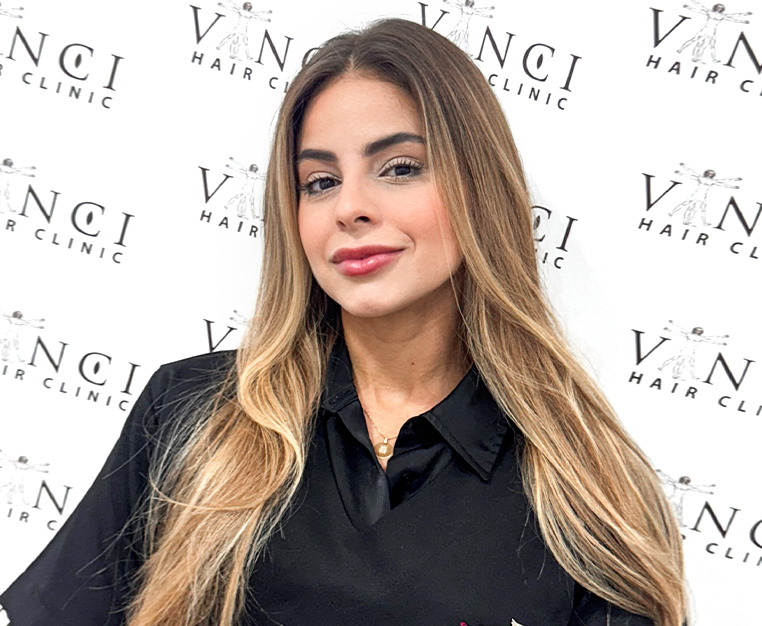Quite often, ideas that have been around for thousands of years are repackaged and reborn as innovative, ultra-modern developments. For example, sunlight was being used to heal wounds as far back as the Ancient Egyptians. These days, different branches of medicine and aesthetics are, once again, using light therapy for healing and regeneration. In hair restoration, low-level laser therapy (LLLT) has emerged as a promising non-invasive way of stimulating hair growth. This article is going to look into the fundamentals of LLLT in the context of hair restoration, exploring how it works and its potential benefits for individuals experiencing hair loss.
Keep scrolling to find out more!
What is LLLT?
LLLT, also known as low-level light therapy or cold laser therapy, is a non-surgical procedure that utilises low-intensity lasers or light-emitting diodes (LEDs) to deliver specific wavelengths of light to the scalp. These lasers emit light in the red or near-infrared spectrum. It is believed that this has beneficial effects on hair follicles, although the precise mechanisms of how this works are still being explored. Several theories have been proposed to explain its effects.
Cellular Metabolism
It is believed that LLLT stimulates the hair follicles at a cellular level, promoting increased cell metabolism. This enhanced metabolic activity improves blood circulation, thus increasing oxygen and nutrient delivery to the hair follicles. This revitalises dormant follicles and stimulates hair growth.
The metabolic impact of LLLT goes beyond improving blood flow, however. It’s also widely held that the stimulation delivered by the procedure activates hair follicle stem cells, which are responsible for the continuous production of new hair follicles. Activating these stem cells enhances the regenerative capacity of the hair follicles, leading to increased hair growth.
And there’s more. LLLT is also thought to increase the production of Adenosine triphosphate (ATP), the energy currency of cells, within the hair follicles. This additional energy can support the cellular processes involved in hair growth, allowing follicles to transition from the resting phase (telogen) to the active growth phase (anagen).
LLLT may influence various cellular signalling pathways involved in hair growth. It has been shown to promote the release of growth factors and cytokines which play crucial roles in regulating hair follicle activity. By modulating these signalling pathways, LLLT can stimulate the production of new hair and prolong the hair growth cycle.
Finally, LLLT may play a role in reducing inflammation in the scalp. Chronic inflammation can contribute to hair loss by disrupting normal hair follicle function, so by reducing inflammation the laser treatment creates a more favourable environment for hair growth.
Painless Procedure
Aside from the impact it has on hair growth, LLLT offers several benefits for men and women seeking hair loss treatment. In the first place, it is a non-invasive procedure that does not require any incisions or anaesthesia. The treatment is considered painless by most of those who have experienced it, and no significant side effects have been reported. It can be effective for different types of hair loss, including androgenetic alopecia (pattern baldness), postpartum hair loss and alopecia areata.
Portable LLLT devices have appeared on the market in recent years, making treatment convenient and accessible. These devices often take the form of helmets, combs, or caps equipped with low-level lasers or LEDs, allowing individuals to perform the therapy in the comfort of their own homes.
LLLT can be used as a standalone treatment or alongside other remedies like topical medications or hair transplantation. It can complement these treatments and potentially enhance their effectiveness.
The Future of LLLT
While results from LLLT treatment are good, it is important to manage expectations and understand that individual outcomes may vary. Consistency and adherence to the recommended treatment protocol are crucial for achieving the best outcomes.
Ongoing research continues to refine the application of LLLT for hair restoration. Advances in technology, such as the development of more powerful and targeted laser devices, may further improve its effectiveness.
Final Thoughts
LLLT is a non-invasive and effective hair loss treatment. By stimulating hair follicles, improving circulation, and modulating cellular processes, it combats hair loss and encourages the growth of new hair. Advances in technology and versatile combinations with other treatments may soon enhance the effectiveness of LLLT even further. Best of all, you can now benefit from the procedure while sitting on your couch at home!
If you’re worried about hair loss or thinning, staring at your hairline in the mirror won’t resolve anything. Speaking with a hair specialist might help, on the other hand. Vinci Hair Clinic offers a free, no-obligation consultation to all new clients. You can choose to have an in-person meeting at one of our clinics or, if it suits you better, we can assess your hair over the phone using photographs. Contact us through our website or one of our social media outlets to schedule your appointment!


